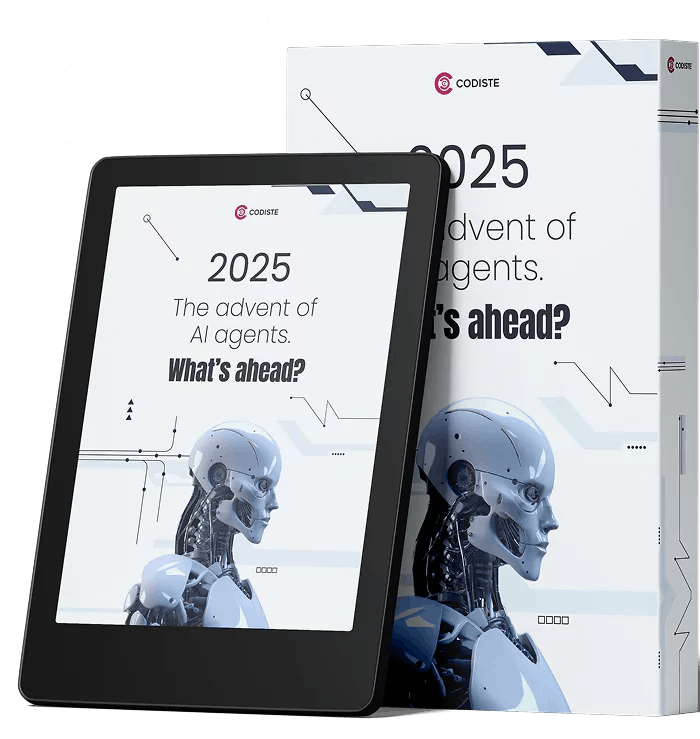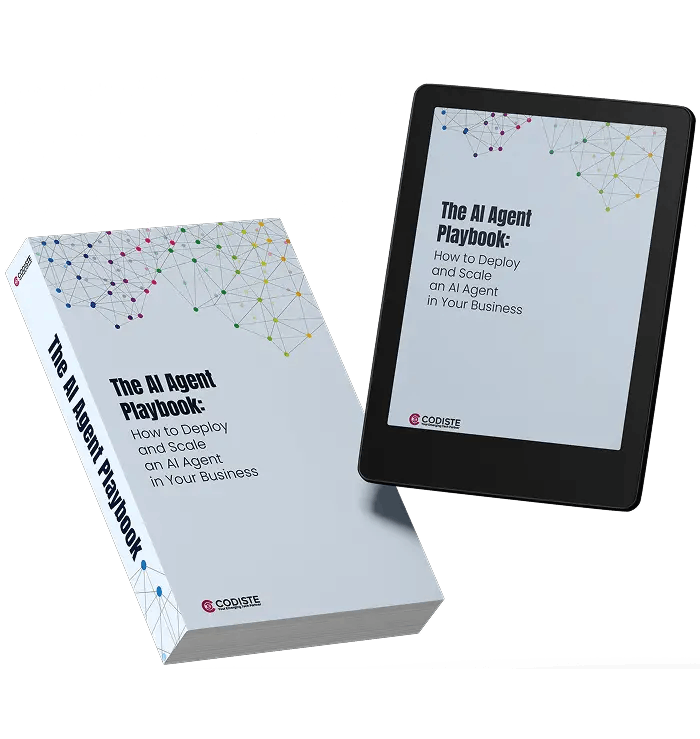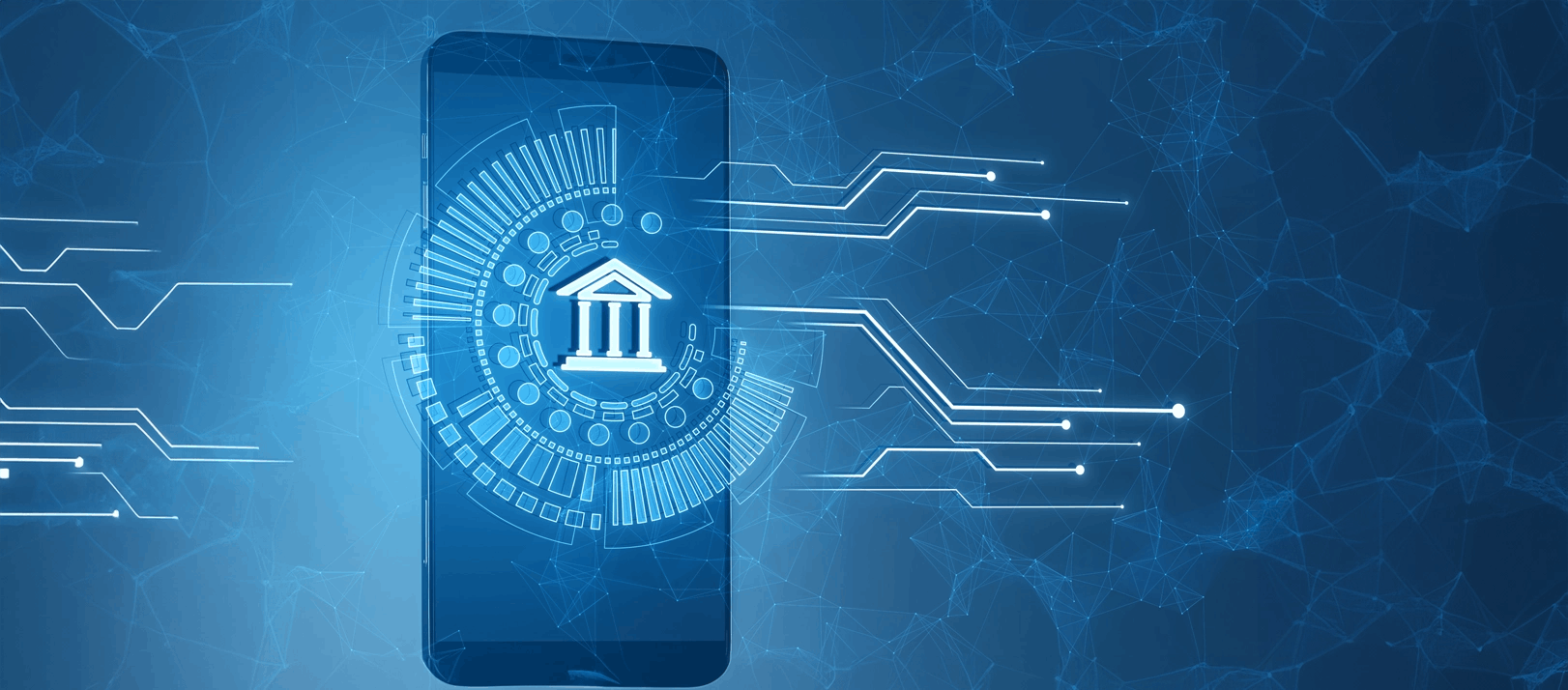
,
Everyone is now enticed by what's next in AI agent development. The talk of every technological foxhole, every corner, and every street is focused on what might happen next. The term was somewhat alien when it first emerged, but it became the most discussed topic within two years, evolving into the coolest technological trend. To their surprise, Sam Altman of OpenAI states in his blog "Reflections" that agentic AI will be in full force in workplaces by 2025. Are businesses ready to move ahead and accept the new era of agentic AI? Let's explore this in the article.
The AI agents market is estimated to be valued at $7.38 billion and will continue to grow at a compound annual growth rate of 44.8% and reach $47.1 billion by 2030.
An overview of AI agents
Automation is undergoing a radical transformation. Traditional systems that once handled predefined business processes with ease are now facing limitations when it comes to more complex, reasoning-based operations.
Enter AI agents—a new era of automation driven by advanced Large Language Models (LLMs). An "AI agent" is an autonomous system powered by LLMs capable of completing tasks on behalf of a user. AI agents have the unique ability to interpret natural language, develop a plan of action, and execute tasks with minimal human intervention.
Using AI agents, businesses now have the opportunity to achieve unprecedented efficiency, allowing employees to focus on higher-level thinking while automation handles the mundane.
6 Essential steps to begin AI agent development
Every business aspires to be a leader at some point, and to lead in that domain; they need careful strategizing and execution across every stage; by following certain aspects, businesses can effectively leverage AI agents and drive innovations, improve efficiency, and enhance customer experiences within their operations. But first, we need to understand the process of implementing an AI agent.
1.Clearly define objectives and identify use cases
Articulate clear goals for the AI agent, such as automating customer service or enhancing user engagement. Identify tasks the agent will perform, like answering FAQs or processing transactions.
2.Selecting the right technology and tools
Choose whether to build the AI agent from scratch or utilize existing low-code/no-code platforms for faster deployment. Ensure the selected technology stack aligns with your team's skills and project requirements.
3.Assessing your existing infrastructure
Evaluate your current IT systems to understand how the AI agent will integrate with existing applications. Identify necessary APIs and data sources to ensure seamless connectivity.

4.Assembling a skilled development team
Gather a team with expertise in machine learning, software development, and user experience design. Key roles should include Machine Learning Engineers, Data Scientists, Software Engineers, and UI/UX Designers.
5.Developing and training your AI model
Create a detailed architectural blueprint of the AI agent, including input processing and decision-making algorithms. Gather relevant training data, clean it for accuracy, and train the model while validating its performance against established metrics.
6.Deployment and performance monitoring
Launch the AI agent in a controlled environment to monitor its performance against key performance indicators (KPIs). Collect user feedback for continuous improvement, ensuring the agent adapts to changing needs over time.
This approach is considerate and focuses on critical steps for successfully streamlining and implementing business automation with AI agents while emphasizing clarity and actionable insights.
Identifying the key sectors that benefit from AI agents
Industries are now adopting AI agents because they can automate tasks, provide valuable insights, and improve efficiency. Further below, we take an overview of who might benefit from AI agents and how to determine if your business is one of them.
A. Understanding the industries that require AI agents for growth
- Data-driven organizations
Enterprises that heavily rely on data analysis can utilize AI agents to identify trends and generate insights from large datasets. This capability enables organizations to make informed decisions and engage in strategic planning. - Large enterprises
Vast enterprises tend to have complex operations and can noticeably benefit from AI agents capable of handling cross-functional processes. By driving efficiently in the segments of data analysis, supply chain management, and customer relationship management (CRM), AI agents can ultimately lead to cost reductions and better revenues. - Small and medium-sized businesses (SMBs)
Many SMBs have also joined the bandwagon to leverage AI agents to automate tasks like inventory management, scheduling, and customer inquiries, allowing businesses to focus on other strategic initiatives. - Customer-centric industries
Sectors that require frequent customer interactions, such as retail, finance, healthcare, and such, can tap into AI agents for better customer interactions. Chatbots that are 24/7 support-ready can manage transactions and analyze customer feedback to enhance service delivery.
B. 4 Clear signs that your business needs AI agents in 2025
To determine whether your business can get the most from implementing AI agents, let's consider the following factors:
- Scalability needs
Businesses most often consider going big. As businesses grow, maintaining high-performance levels can become challenging. AI agents, when utilized, can scale this down to handle increased workloads without sacrificing accuracy and quality. - Operational flaws
When a significant amount of time is spent on routine tasks that could have been automated (e.g., data entry, customer inquiries), AI agents can break that monotony and streamline these processes to free up human resources for more decisive tasks. - Customer service needs
Are you experiencing a torrent of customer inquiries or support requests? Deploying AI agents can help businesses enhance response times and satisfy customer reactions by providing instant assistance. - Data utilization
Many enterprises are competent enough to collect vast amounts of data but struggle to utilize all the relevant insights to their maximum potential; AI agents can analyze this data effortlessly and identify trends that can form future business strategies. - Competitive advantage
In sectors where competitors are adopting advanced technologies, you might not want to be left behind, and integrating AI agents may be fundamental to remaining competitive. Businesses that leverage these tools have often seen immediate and efficient results.
AI agents transform businesses in ways many would've never thought of; the key lies in aligning your specific business objectives and evaluating your needs against AI capabilities; you can make an informed decision about integrating these solutions into your business strategy.
Choosing between Code and No-code for your agent development
When developing AI agents, businesses can choose between two main approaches: Code and No-code. Here's a quick overview of each approach to help you decide which suits your needs best.

A. Coded Approach in AI Development
Building intelligent AI agents from scratch using programming languages and frameworks. Developers write custom code to create models, handle data, and integrate APIs.
Why the coded approach is Ideal for AI agents
- Customization
With this approach, businesses can get tailored solutions that meet complex requirements and unique functionalities that can align precisely with their business needs and optimal performance. - Flexibility
Imagine having the ability to integrate advanced tools and distinct features; developers can leverage various libraries and frameworks to the agent, adapting as its technology evolves. - Control
With total oversight of the data processing and the agent's framework, developers can ensure the security and efficiency of the agent, which is essential for organizations with stringent compliance and regulations.
Overcoming the challenges of a coded approach for agent development
- Skill requirement
A prerequisite for this approach is strong expertise in programming and AI concepts. Organizations might need to get involved and invest heavily, as this can be a barrier for smaller teams. - Time-intensive
AI agents developed through coding can take up more time and resources than their no-code counterparts. The process often involves extensive debugging and testing to ensure everything is functional and reliable. - Higher costs
Skilled resources and additional requirements can lead to higher overall costs, and organizations must weigh in on these expenses against the potential benefits of a custom-built solution.
Best suited for
Large organizations or projects needing advanced customizations and dedicated development teams.
B. Why choose the No-code approach for your agent development
Allowing users to create AI agents using pre-built platforms with drag-and-drop interfaces, requiring minimal programming knowledge.
Key benefits of the No-code approach
- Ease of use
When businesses develop no-code platforms, they want these to be user-friendly, enabling non-technical users to develop AI agents swiftly and allowing teams involved to focus on building solutions without getting hassled by technical complexities. - Cost-effective
When you cut down on your need for a highly skilled development team, you save a lot on labour costs, an approach beneficial for small businesses and startups with limited resources at their disposal. - Focus on business goals
Imagine your team is lost in technical details for getting desired outcomes while missing out on other essentials. This approach ensures that the AI agent aligns with business objectives and delivers value efficiently.
Common pitfalls of a No-code approach
- Limited customization
Although no-code platforms are user-friendly, they cannot handle complex requirements, and organizations with exclusive needs might not find these platforms enticing. - Dependence on platforms
Lack of functionalities can hinder the development process or even limit the effectiveness of the AI agent, and users relying heavily on the chosen no-code platforms will be impacted in the long run. - Scalability issues
When large data sets or performance focus is the highlight, no-code solutions might struggle, and every organization that plans to scale up might face this challenge with their respective AI agents.
Best suited for
If you are a small to medium-sized business(SMB), the no-code approach can benefit you, whereas rapid prototyping and use cases like chatbots are your requirements.
C. How can a blended approach work
Many organizations find that a blended approach works best—using no-code tools for quick prototyping and the code approach for core customizations and scalability. Ultimately, your choice should reflect your project's complexity, budget, and technical expertise.
Choosing the right approach
- Choose Code if you need deep customization and robust scaling and have skilled developers available.
- Choose No-Code if you have limited technical expertise, want to prototype quickly, or must address simple use cases.

What’s the real story of 2025?
This eBook breaks down what every leader must know for 2025.
Real-world use cases of AI agents in modern businesses
AI agents have been used for their adaptations to the provided scenarios across various sectors, demonstrating their ability to learn, evolve, and adapt. The examples provided illustrate the versatility of AI agents and how businesses are smartly utilizing these agents.
Use cases of AI Agents in various industries.
1.E-Commerce
Amazon's recommendation system.
- AI agents analyze customer behaviour to provide personalized product recommendations, track orders, and manage cart abandonment reminders. Thus enhancing user experience and driving significant sales revenue.
- Amazon's recommendation system is the core of its e-commerce strategy, utilizing AI agents to analyze vast customer data. Amazon provides personalized product recommendations just by examining browsing history, purchase patterns, and even items added to carts but not purchased. This system reportedly drives 35% of Amazon's total sales, highlighting its effectiveness in enhancing user experience and increasing revenue. These AI algorithms continuously learn from user interactions, allowing for increasingly accurate suggestions.
2.Customer Support
AI-powered chatbots used by companies like Zappos and Chatbase.
- AI agents can handle routine inquiries, provide product recommendations, and execute tasks like processing refunds or changing passwords.
- Companies like Zappos and Chatbase have implemented AI-driven customer service agents to improve customer support efficiency. For instance, Zappos chatbots can handle routine inquiries, such as order tracking and product recommendations. This automation has led to a 30% reduction in support ticket volume, allowing humans to focus on more complex customer issues. These chatbots can also execute tasks like processing refunds or changing passwords, significantly speeding up response times and enhancing customer satisfaction.
3.Healthcare
AI health assistants like those developed by Teneo AI.
- AI agents assist with patient management by providing medication reminders, symptom tracking, and personalized health advice. They can also help healthcare providers with scheduling and accessing patient records efficiently.
- AI health assistants, by Teneo AI, can transform patient management in healthcare settings. These agents serve as medication reminders, track symptoms, and offer personalized health advice. A study showed that using AI health assistants can improve medication adherence by 20%, leading to better health outcomes. These AI agents help healthcare providers manage appointments and access patient records, streamline operations and minimize administrative burdens.
4.Finance
Fraud detection systems implemented by JP Morgan.
- AI agents analyze transaction patterns to detect fraudulent activities, significantly reducing losses due to fraud. They also provide customers with personalized financial advice based on their spending habits and market trends.
- JP Morgan employs AI agents for fraud detection, analyzing transaction patterns to identify potentially misleading activities. Their system has reportedly reduced fraud losses by 50% through real-time monitoring and analysis. These AI agents can provide personalized financial advice based on market trends and individual spending habits, helping customers make informed decisions. This dual functionality protects the bank's assets and enhances customer trust and engagement.
5.Manufacturing
Robotic process automation (RPA) tools.
- In manufacturing settings, AI agents perform tasks such as welding and assembly while optimizing production processes. They help maintain quality standards and reduce operational costs through predictive maintenance.
- (RPA) tools are utilized to optimize production processes. Companies like Siemens have integrated AI agents to perform tasks such as welding and assembly. This implementation has led to a 15% increase in production efficiency and a significant reduction in operational costs through predictive maintenance. By anticipating equipment failures before they occur, manufacturers can minimize downtime and maintain quality standards.
6. Transportation
Autonomous vehicles developed by companies like Waymo
- Utilizing various types of AI agents for navigation, decision-making, and real-time response to environmental changes can represent one of the most advanced applications of AI technology in real-world scenarios.
- Waymo's development of autonomous vehicles exemplifies the advanced application of AI technology in transportation. These vehicles utilize a combination of AI agents for navigation, decision-making, and real-time responses to environmental changes. Waymo's autonomous cars have completed over 20 million miles on public roads, demonstrating their capability and safety. This not only has the potential to reduce traffic accidents but also aims to revolutionize urban mobility by providing efficient and reliable transportation solutions.
Read more:
The Complete Generative AI Handbook for Business Leaders
Building Autonomous Systems with Agentic LLMs: A Practical Guide
How to Implement AI Agents in Your Small Business
How to build an AI agent using no-code tools?
How to Choose an AI Agent Development Company: A Comprehensive Guide
The Cost and Value Equation of Custom Generative AI Solutions
The Essential KPIs to Track AI Agent Deployment Success
7 Best RESTful API Design Patterns for Developers to Implement
Building a Robust Technology Stack for AI Agents
The technology stack to build AI agents is multifaceted, incorporating ML frameworks, programming languages, data management tools, deployment platforms, monitoring systems, and user interface frameworks. Below is an overview of the key components of the technology stack used in developing an AI agent.

1.Machine learning frameworks
- TensorFlow: An open-source library developed by Google, ideal for building and training deep learning models. It provides high-level APIs that simplify the development process.
- PyTorch: PyTorch is preferred for its dynamic computation graph, making it easier to work with neural networks. It is widely used in research and production settings.
- Keras: A high-level API that runs on TensorFlow, allowing for quick model prototyping and experimentation.
2.Programming languages
- Python: Python is the predominant language for AI development due to its simplicity and extensive libraries. Libraries like NumPy, Pandas, and Matplotlib facilitate data manipulation and visualization.
- JavaScript: Often used for building interactive web interfaces for AI agents, especially in conjunction with frameworks like Node.js for backend services.
- Java is commonly used in enterprise environments to build scalable applications and integrate with existing systems.
3.Data management tools
- SQL Databases: These databases are essential for handling transactional data and are used for structured data storage and management (e.g., MySQL, PostgreSQL).
- NoSQL Databases: These databases are suitable for unstructured data storage (e.g., MongoDB, Cassandra), high-velocity data, and flexible schemas.
- Big Data Solutions: Technologies like Apache Hadoop and Apache Spark are used to process large datasets across distributed environments, enabling efficient data handling.
4.Development environments
- Google Colab: A cloud-based platform that allows collaborative development and training of machine learning models using GPUs.
- Jupyter Notebooks: An interactive environment ideal for prototyping and sharing code snippets and visualizations.
5.Deployment platforms
- Docker: A containerization platform that simplifies the deployment of applications by packaging them with their dependencies.
- Kubernetes: An orchestration tool for managing containerized applications at scale, ensuring the reliability and scalability of AI agents.
- Cloud Services: Platforms like AWS, Google Cloud, and Microsoft Azure provide scalable infrastructure for deploying AI models and applications.
6.Monitoring and management tools
- Prometheus & Grafana: Used for monitoring the performance of deployed AI agents, providing insights into metrics such as response times and error rates.
- MLflow: An open-source platform that manages the machine learning lifecycle, including experimentation, reproducibility, and deployment.
7.User interface frameworks
- Frontend Frameworks: Technologies like React, Angular, or Vue.js are utilized to build responsive user interfaces that facilitate user interaction with AI agents.
- API Gateways: Middleware solutions that connect the frontend applications to backend services, allowing seamless communication between different components.
By leveraging the right technologies tailored to specific business needs, organizations can enhance operational efficiency and improve user engagement through intelligent automation.
AI agent development tools and platforms
Moving ahead, there are many tools and platforms available to develop AI agents. These platforms range from no-code low-code to coded versions. They can cater to a variety of skill levels, from beginners to experienced developers, and offer functionalities that can revise the entire development process.
1.Bolt
Bolt is a no-code platform designed to build AI agents quickly and efficiently. It offers a user-friendly interface that allows users to create applications through simple drag-and-drop functionalities. Bolt's key features include:
- Rapid prototyping capabilities.
- Integration with various APIs for enhanced functionality.
- Ideal for businesses looking to implement AI solutions without extensive programming knowledge.
2.Replit
Replit is an online IDE that supports collaborative coding and real-time project development. It is accessible for beginners and provides a platform for building and deploying applications quickly. The highlights Replit brings in are as follows:
- Browser-based interface that eliminates the need for local setup.
- Real-time collaboration tools for team projects.
- Supports numerous programming languages, making it versatile for various development needs.
3.Cursor
Cursor is an AI-powered code editor that assists developers in writing code more efficiently. It combines natural language processing with coding capabilities, making it suitable for both beginners and experienced programmers. Cursor focuses on:
- Advanced autocompletion and suggestions based on context.
- Integration with existing development environments like Visual Studio Code.
- Enhances productivity by allowing users to focus on higher-level tasks while automating routine coding processes.
4.AutoGen
AutoGen simplifies the process of building complex multi-agent systems. It allows users to create specialized agents that can communicate with one another, enhancing collaborative workflows. With AutoGen, businesses can:
- Customize agent functionalities tailored to specific business needs.
- A robust support system for automation across different tasks and processes.
5.LangChain
As the name suggests, “Chain of Languages” LangChain is a framework created to build applications powered by language models. It enables developers to create conversational agents and other text-based applications seamlessly. LangChain should be your go-to option when:
- Your requirement is for modular architecture that allows easy integration of various components.
- Suitable for both simple chatbots and complex language-driven applications.
These are just the most popular from the lot. Leveraging these tools and platforms, businesses can get the most out of everything as these set of tools can assist with the most basic to the most advanced of requirements.

Is your infrastructure ready for autonomous agents?
Discover what tech stack, workflows, and governance you need for scale.
How Future Trends in AI Agents Will Redefine Business Operations
As we move into 2025, the landscape of agentic AI is set to undergo significant transformations. This evolution is driven by increasing project value, industry relevance, widespread adoption, and potential disruptions that AI agents may introduce. Here's a closer look at these factors:
Project value
The global AI agent market is projected to grow from $5.29 billion in 2024 to $216.8 billion by 2035, reflecting a compound annual growth rate (CAGR) of 40.15%. This rapid growth underscores the increasing recognition of AI agents as valuable tools for enhancing efficiency and driving innovation within organizations. Companies are expected to leverage AI agents to automate complex workflows, leading to faster turnaround times and the creation of new business models.
Relevance across industries
AI agents are becoming increasingly relevant in various sectors, including:
- Healthcare
Automating patient management and improving decision-making processes. - Finance
Enhancing fraud detection and automating customer service interactions. - Manufacturing
Optimizing supply chain operations and predictive maintenance.
As organizations seek to improve operational efficiency and customer experience, the relevance of AI agents will continue to expand beyond traditional applications.
Adoption Trends
A significant shift towards adopting AI agents is anticipated, with 80% of organizations planning to integrate them by 2026. The desire for automation and productivity gains fuels this trend. Key trends include:
Transitioning from reactive assistants to proactive problem solvers that anticipate user needs.
The emergence of multi-agent collaboration is capable of teaming up across all applications to automate entire workflows.
Disruption Potential
AI agents have the potential to disrupt existing business models and workflows significantly:
- They can operate autonomously, reducing reliance on human intervention for routine tasks.
- Introducing "superagents" may orchestrate interactions between multiple AI systems, enhancing collaboration and efficiency.
- As AI agents evolve into more sophisticated entities capable of reasoning and decision-making, they challenge traditional organizational roles.
The future of agentic AI looks promising as businesses recognize their value in driving them forward. With projected growth and influence across various sectors, widespread adoption, and significant potential, AI agents are posed to transform how organizations operate in 2025 and beyond.
How to get started with AI agent development
Choosing the right development approach depends on your organization's specific needs, resources, and long-term goals. Businesses—whether small-to-medium-sized (SMB) or large-scale—have several options to consider.
From In-house development to SaaS solutions, outsourcing for your needs, or seeking expertise from agencies or consultants. Each approach has its advantages and suitability depending on the organization's resources, expertise, and objectives. Here's a summary of the key options available:
Key Approaches to Building Agentic AI

1.In-house development
Build and maintain AI agents using your existing team.
Advantages
- Full oversight of development and data.
- Tailored solutions for your needs
- Develop internal expertise.
Considerations
Requires skilled developers and can be resource-intensive.
Best For
Organizations with strong technical resources and a long-term vision for AI.
2.Software as a Service (SaaS)
Utilize third-party platforms for pre-built AI functionalities.
Advantages
- Fast implementation without extensive development.
- Pay-per-use model.
- Provider handles updates.
Considerations
Limited customization and dependence on the provider.
Best For
SMBs needing quick, low-cost AI solutions for businesses, like chatbots.
3.Outsourcing
Hire an external team
Advantages
- Specialized skills available.
- Easily adjust development efforts.
- Frees internal resources.
Considerations
Potential communication challenges and variable quality.
Best For
Businesses needing custom AI agent development without internal expertise.
4. Agency or Consultant
Partner with agencies or consultants for comprehensive AI services.
Advantages:
- End-to-end solutions are provided.
- Expert guidance for your AI strategy.
- Proven methodologies reduce development risks.
Considerations
Higher costs and less control over development.
Best For
Larger organizations needing strategic support in early project stages.
Considering all the above factors, you can choose the approach that aligns with your resources, expertise, and project needs to develop AI agents that meet your business needs effectively.
Final thoughts and recommendations
As we prepare ourselves to fasten up our shoes for an AI-powered revolution, AI agents are no longer just a futuristic concept—they're now more than that; they are transformative and shaping industries of the future. The capabilities that AI agents bring in today are unmatched.
This article has explored how businesses need the agents, their implications across various industries, the technologies they support, and their versatility and impact globally. These insights illustrate these agents' power and equip you with actionable knowledge on how to integrate them into your business processes effectively.
Takeaways from the Article
- AI Agents are Transformative Tools for Modern Businesses
AI agents, powered by advanced Large Language Models (LLMs), are revolutionizing automation by enabling businesses to handle complex, reasoning-based operations efficiently, improving productivity and customer experiences across various industries. - AI Agent Adoption is Crucial for Staying Competitive
By 2026, 80% of organizations are expected to integrate AI agents; as AI agents continue to evolve and integrate into workflows, they are becoming essential for scalability, operational efficiency, and gaining a competitive edge. Signaling the importance of early adoption to remain ahead in the market. - Development Options Must Align with Business Needs
Organizations can choose between in-house development, SaaS platforms, outsourcing, or consulting based on their technical expertise, budget, and project goals. Each approach has distinct advantages and is suitable for different scales and complexities of business operations.
As 2025 unfolds, the question isn't about adapting AI agents but leveraging them to gain a competitive edge. Carefully selecting AI agent development strategies that align with your objectives, investing in robust integration, and fostering an AI-friendly culture can help you unlock unprecedented levels of success and growth.
Next-generation AI technologies are transforming how businesses operate. By automating repetitive tasks and improving workflows, generative AI allows employees to focus on meaningful, high-value work, making operations smoother and more efficient.
We're here to guide you if you’re exploring the idea of building an AI agent tailored to your business needs or unsure where to start. At Codiste, we specialize in AI solutions that work for your unique goals. We specialize in AI solutions designed to support your specific objectives. Reach out to us today to start the conversation.
We are a bunch of folks who like artificial intelligence (AI), machine learning (ML), and blockchain and love to talk about it and work on it. We want to deliver solutions that create intelligent systems that redefine optimal performance.
Whether you're exploring agentic AI for automation or looking to integrate intelligent systems into your workflows, our team is ready to venture.
Learn more about how we can help you stay ahead in the ever-evolving digital landscape.



Top Industries Benefiting from AI Voice Assistants in Customer Service
Know more
Building a Compliance-First Neobank: Tech Stack, AI Models, and Regulatory Architecture
Know more
